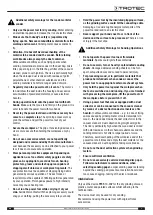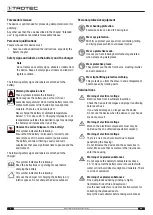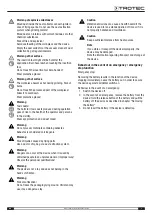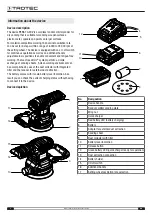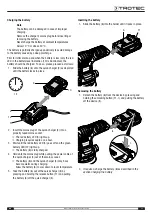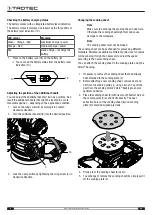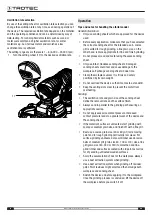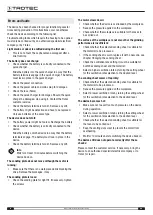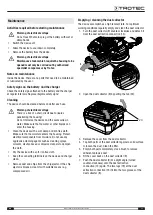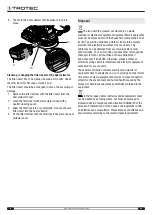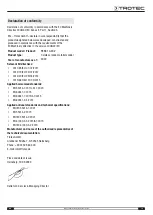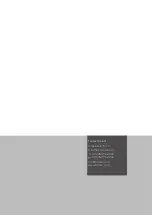
14
EN
Cordless random orbital sander PESS 10-20V
Oscillation rate selection
By use of the setting wheel for oscillation rate selection you can
change the oscillation rate at any time, even during operation of
the device. The required oscillation rate depends on the material
and the operating conditions and can be determined by way of
field-testing. For sanding harder materials such as wood or
metal we recommend a higher oscillation rate, for softer
materials e.g. non-ferrous metals and varnishes a low
oscillation rate is sufficient.
The setting range covers the levels 1 – 6 (6,000 – 24,000 rpm).
1. Turn the setting wheel (
17
) to the desired oscillation rate.
17
Operation
Tips and notes for handling the orbital sander
General information:
•
Only use sanding sheets which are approved for the device
used.
•
Before every application, make sure that you have selected
the correct sanding sheet for the intended use. A coarse
grit is suited for rough grinding, a fine grain size, on the
other hand, is more appropriate for fine and finish grinding.
•
Do not process wood and metal using the same sanding
sheet.
•
Only use intact, flawless sanding sheets. Damaged
sanding sheets could tear and cause damage to the
workpiece. Exchange sanding sheets in due time.
•
Clamp the workpiece unless it is firmly and safely
positioned by its own weight.
•
Do not overload the device so that it comes to a standstill.
•
Keep the venting slots clear to prevent the motor from
overheating.
Sanding:
•
The oscillation rate and grain size of the sanding sheet
define the removal rate and the surface finish.
•
Always sand in parallel to the grinding path ensuring an
appropriate overlap.
•
Do not apply excessive contact pressure. Increased
contact pressure leads to a greater wear of the device and
the sanding sheet.
•
If the material's surface is untreated, start grinding with
coarse or medium grain size and finish off with a fine grit.
•
Best use a coarse grain size (40 or 60 grit) for removing
paint and for rough grinding particularly raw wood. For
surface-grinding undressed or sawn timber use abrasive
belts of medium grit (grain size 80, 100 or 120). Use a fine
grit (grain size 180, 240 or 320) to smoothen and fine-
grind timber and surfaces coated with old paint as well as
for dry sanding untreated wooden surfaces.
•
Avoid the accumulation of dust at the workplace, always
use a dust extraction system when grinding.
•
Use a dust extraction system when grinding off residual
paint. Paint residues might smelt and then smudge both
workpiece and sanding sheet.
•
Switch the device on before applying it to the workpiece.
Once the grinding process is concluded, lift the device off
the workpiece before you switch it off.





